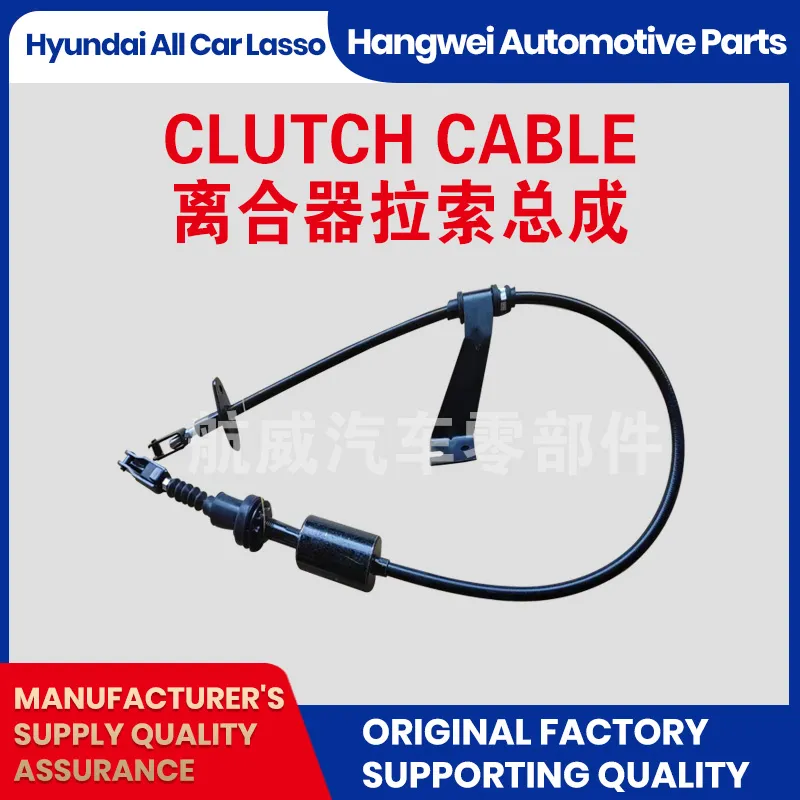Exploring the Mechanisms of Shift Cable Linkage Systems in Automobiles
Understanding Shift Cable Linkage Key to Smooth Gear Shifting
The shift cable linkage is a fundamental component in the transmission system of most modern vehicles. It plays a crucial role in ensuring that drivers can change gears smoothly and efficiently, contributing to overall vehicle performance. Understanding how shift cable linkage works can provide insights into the importance of regular maintenance and the potential issues that can arise if it is not functioning correctly.
At its core, the shift cable linkage is a mechanical connection between the gear shifter inside the vehicle and the transmission itself. When a driver wants to change gears, they move the gear shifter, which in turn pulls or pushes the shift cable. This action transmits the driver's intention to the transmission, allowing it to engage the desired gear. The shift cable typically consists of a flexible metal wire encased in a plastic or rubber sheath, providing both durability and flexibility.
One of the main advantages of using shift cable linkage is its simplicity and effectiveness
. Unlike older systems that relied on direct mechanical linkages, shift cables allow for a smoother and more ergonomic operation. They can accommodate the necessary range of movement without the need for complex mechanical assemblies, reducing the weight and potential failure points within the system.shift cable linkage

However, like any mechanical component, shift cable linkage is subject to wear and tear over time. Common issues can include stretching or fraying of the cable, which can lead to difficulty in shifting gears or, in some cases, complete failure to engage certain gears. Drivers may notice symptoms such as a grinding noise when changing gears or a delay in the responsiveness of the gear shift. In more severe cases, the driver may find that the shifter feels loose or disconnected entirely, which can pose significant safety risks.
Routine inspection and maintenance are essential to ensure the longevity and reliability of shift cable linkage. Drivers should regularly check for visible signs of wear, such as frayed cables or damage to the housing. Lubrication of the cable can also help to minimize friction and wear, contributing to smoother operation. If any issues are detected, it is crucial to address them promptly to avoid more extensive damage or an inconvenient breakdown.
In some modern vehicles, shift cable linkages have evolved to include electronic elements, such as sensors that communicate the position of the gear shifter to the vehicle's onboard computer. This advancement improves the accuracy of gear engagement and can enhance the performance of automatic transmissions by optimizing shift points based on driving conditions.
To conclude, the shift cable linkage may seem like a small part of a vehicle's transmission system, but its importance cannot be overstated. This component is pivotal in ensuring that the gear-shifting process is seamless and efficient. Regular maintenance and attention to the condition of the shift cable can help prevent issues that may lead to costly repairs or dangerous driving situations. By understanding the function and care of the shift cable linkage, drivers can ensure their vehicle remains safe and enjoyable to drive, contributing to a smoother overall driving experience.
-
Workings of Clutch Pipe and Hose SystemsNewsJun.04,2025
-
The Inner Workings of Hand Brake Cable SystemsNewsJun.04,2025
-
The Secrets of Throttle and Accelerator CablesNewsJun.04,2025
-
The Hidden Lifeline of Your Transmission Gear Shift CablesNewsJun.04,2025
-
Demystifying Gear Cables and Shift LinkagesNewsJun.04,2025
-
Decoding Clutch Line Systems A Comprehensive GuideNewsJun.04,2025
